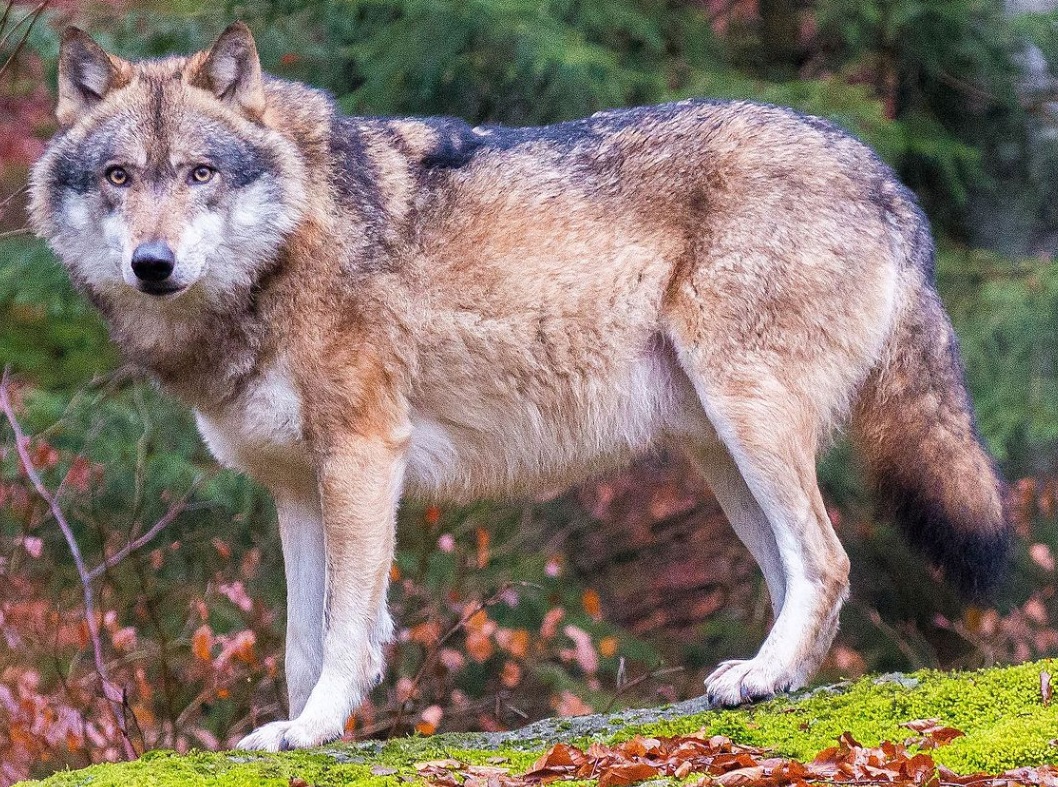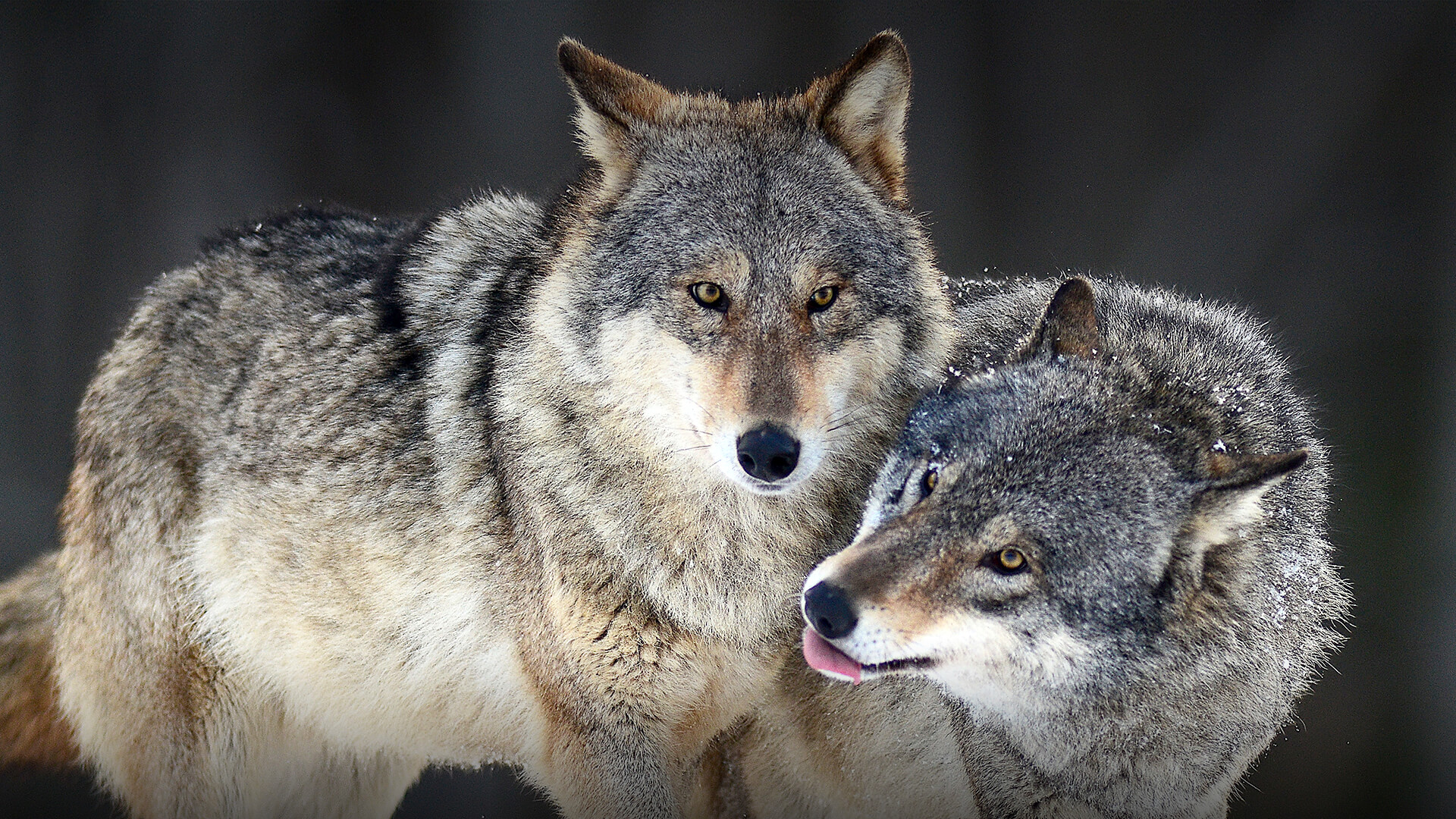

Information listed here refers to populations in the Western United States. Each subspecies varies in range, appearance and conservation status. There are currently 39 described sub-species of gray wolf including the dingo and the domestic dog, although there is a great deal of dispute surrounding some classifications. They are also listed under Convention on the International Trade in Endangered Species (CITES) Appendix II, which lists species that are not necessarily now threatened with extinction but that may become so unless trade is closely controlled. The International Union for Conservation of Nature list the status of the overall population as being of least concern, however the United States Fish and Wildlife Service lists six different populations with statuses ranging from Endangered to Delisted due to recovery. Entering breeding age around 3 years old, a lone wolf may form a new pack with a member of the opposite sex. Once a young wolf has left the pack it will either join another lone wolf in order to search for new territory, or it will establish itself in an area and wait for an animal of the opposite sex to arrive. As a young wolf reaches maturity around 2 years of age, it may actively explore the fringes of its parental territory prior to leaving. These tunnels, or maternity dens, are one of the only ways wolves will seek shelter, and the same den may be used repeatedly for years.ĭepending on a variety of factors, a young wolf may stay with its parental pack or go out on its own. Dens may be in rock crevices, hollow logs, or overturned stumps, but are usually in a burrow, either dug by the parents themselves or initially made by another animal and enlarged by the wolves. They emerge from the den when they are 3 weeks old. The gestation period is 62 to 63 days with an average litter size of six.Īt birth, wolf pups weigh about 16 ounces (450 grams) and are blind and deaf. Courtship can last for days or months with estrus lasting five to 15 days. Mating may occur anytime from January to April with births taking place in spring. In a pack, typically only the dominant pair mates. A pack leader may retain his position as the dominant male for years, but strife from increasing pack size or declining food supplies can result in the division of a pack or the splitting off of individuals. The other wolves may have separate dominance hierarchies, reinforced by aggressive behavior and elaborate displays of greeting and submission by subordinate members.

They are typically the only wolves that mate within a pack, and they inhibit the sexual activity of others.
GRAY WOLF FORMS HOW TO
Essentially, the mother and father are teaching the rest of the pack how to hunt, survive, avoid threats and mark territory.Ī wolf pack's dominant pair sometimes mate for life. The dominant pair usually initiates activity, guides movement and takes control at critical times, such as during a hunt. The pack is essentially a family group consisting of an adult pair, called the dominant pair, and their offspring. Wolf packs typically have five to eight wolves, but packs with as many as 36 wolves have been reported. The gray wolf is among the most social of carnivores. They may also raise a hind leg to expose the groin area. Subordinate postures include lowered tails, a lowered body position, an exposed throat, small steps towards more dominant members, a peeling back of lips, ears folded back and can include urination while crouching or urination on themselves.

A dominant wolf may "ride up" on a subordinate wolf by placing its head or forelegs across that animal's shoulders. They may also growl, show bared teeth, a wrinkled forehead, and their ears may stand erect and pointed forward. Dominant wolves may show raised hackles, and may also side-swipe or slam into the subordinate members of the pack. Just as human postures and gestures express our intentions and feelings, the wolf also uses body language to communicate.ĭominant postures may include a partly erect tail, walking with the head held high and eyes directed straight towards other wolves. Scent marking via scratching, defecation and urination are all means of maintaining pack territories.īody language is a tool of communication for the wolf. Howling increases during breeding season (January through April). If answered, the wolf switches to deep, even howls to inform the pack of its location and help it to be found. Howling can also return a lost wolf to its pack.Ī "lonesome howl" is a shortened call that rises in pitch used by a wolf that is separated from its pack. Howling functions as a way to keep the pack back together, stimulate a hunt and as a long-distance form of territorial expression. Different individuals have different howls that can be heard by other wolves at distances of 6 to 7 miles (10 to 11 kilometers). Vocalizations include growls, barks and howls. Gray wolves have a variety of visual, olfactory and auditory means of communicating.


 0 kommentar(er)
0 kommentar(er)
